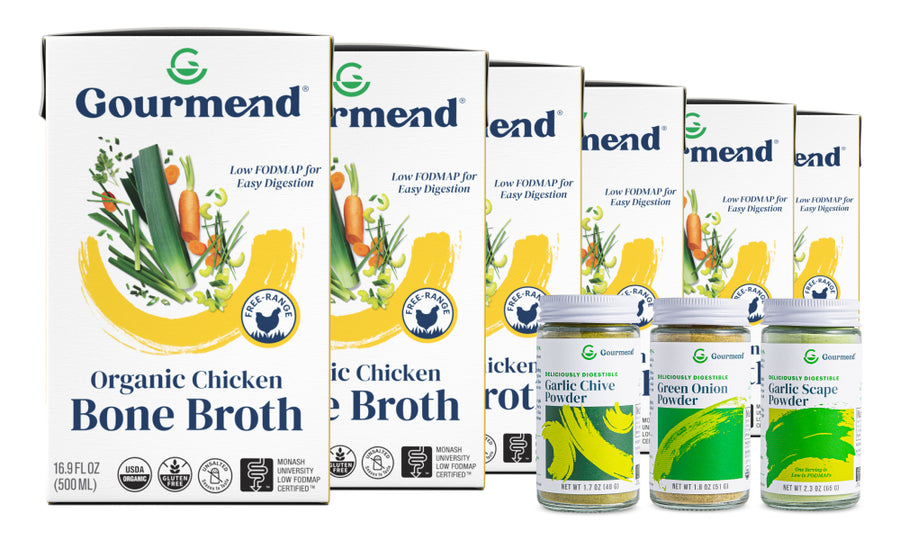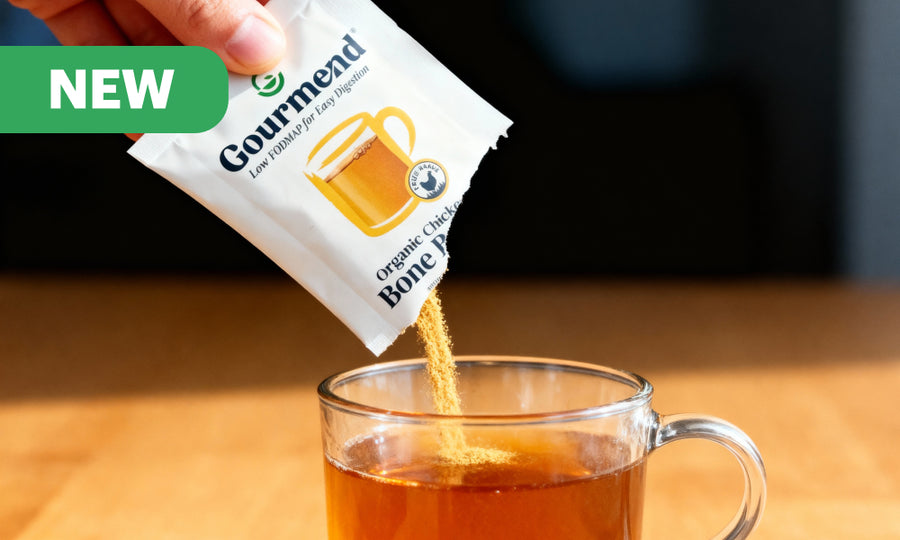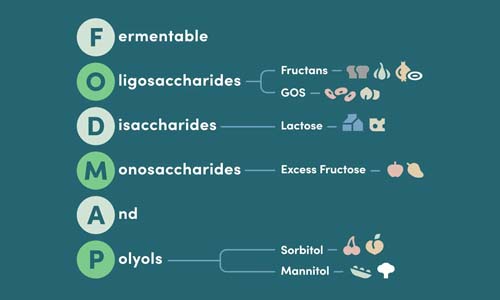Low FODMAP Breakfast Recipes That Taste Amazing

Starting your day with the right low fodmap breakfast can transform your morning from a source of digestive anxiety into a foundation of comfort and energy. For the millions of people managing IBS and gut sensitivities, breakfast often feels like navigating a minefield—but it doesn't have to be that way. With thoughtful ingredient choices and a solid understanding of how certain foods affect your digestive system, you can create delicious morning meals that nourish your body without triggering uncomfortable symptoms.
Key Takeaways
- Starting your day with a low FODMAP breakfast can reduce digestive discomfort and boost your energy.
- Many people with IBS and gut sensitivities find breakfast challenging but manageable.
- Choosing ingredients carefully helps prevent triggering digestive symptoms.
- Understanding how certain foods affect digestion is key to creating safe and tasty meals.
- Delicious low FODMAP breakfasts can nourish your body without causing discomfort.
Table of Contents
The reality is that breakfast plays a crucial role in setting the tone for your entire day, especially when you're dealing with digestive sensitivities. Your gut has been resting overnight, and that first meal can either ease you gently into the day or send your system into overdrive. Understanding how to craft fodmap breakfast options that work with your body—not against it—is one of the most empowering steps you can take for your digestive health.
Understanding IBS and the Role of Breakfast
When you live with IBS, breakfast isn't just about fueling up for the day—it's about managing a complex digestive response that can make or break your morning comfort. The connection between what you eat first thing and how your gut reacts throughout the day is more significant than many people realize.
The Importance of Breakfast in Daily Nutrition and Metabolism
Breakfast serves as your metabolic kickstart, providing essential nutrients and energy after an overnight fast. For people with digestive sensitivities, this meal becomes even more critical because it sets the stage for how your gut will respond to food throughout the day. A well-balanced morning meal helps stabilize blood sugar, supports sustained energy levels, and provides your body with the building blocks it needs for optimal function.
When you skip breakfast or choose foods that don't align with your digestive needs, you're essentially setting yourself up for a day of potential discomfort. Your metabolism slows down, your blood sugar becomes unstable, and your digestive system may become more reactive to whatever you eventually eat.
Connection Between Breakfast and IBS Symptoms
The timing and composition of your breakfast can significantly influence when and how intensely IBS symptoms appear. This connection stems from something called the gastrocolic reflex—a natural response where your colon becomes active shortly after eating. For people with IBS, this reflex can be heightened, leading to urgency, cramping, or discomfort within minutes of eating.
The foods you choose for breakfast matter tremendously in this equation. High FODMAP ingredients like certain fruits, dairy products, or wheat-based items can trigger fermentation in your gut, leading to gas, bloating, and other uncomfortable symptoms. Understanding this connection helps explain why some mornings feel smooth while others start with digestive distress. For more information on how FODMAPs affect digestion, you can visit the Monash University FODMAP resource.
How IBS Affects Digestive Response to Breakfast
Living with IBS means your digestive system is more sensitive to various triggers, and morning symptoms like urgency, bloating, and discomfort are often the first signs that your breakfast choices aren't working for you. After fasting overnight, your gut can be particularly reactive to the first foods you introduce.
This heightened sensitivity occurs because people with IBS often have what's called visceral hypersensitivity—meaning their gut nerves are more responsive to normal digestive processes. When you add high FODMAP foods into this already sensitive environment, the result can be an uncomfortable start to your day that affects your confidence and quality of life.
Benefits of a Low FODMAP Diet for IBS

The low FODMAP approach offers a science-backed strategy for managing IBS symptoms, particularly when applied to your morning meal choices. This dietary framework helps identify and eliminate specific carbohydrates that can trigger digestive discomfort, allowing you to enjoy flavorful fodmap breakfasts without the anxiety.
What Are FODMAPs and Their Effect on IBS Symptoms
FODMAPs—fermentable oligosaccharides, disaccharides, monosaccharides, and polyols—are specific types of carbohydrates that can be poorly absorbed in the small intestine. When these compounds reach your colon, they become food for gut bacteria, leading to fermentation that produces gas and can trigger symptoms in sensitive individuals.
Common high FODMAP breakfast foods include apples, wheat-based cereals, milk, yogurt with certain additives, and foods containing onion or garlic powder. These ingredients might seem healthy and harmless, but for someone with IBS, they can turn a peaceful morning into an uncomfortable experience filled with bloating, cramping, and urgency.
How a Low FODMAP Breakfast Minimizes Gastrointestinal Discomfort
By choosing low fodmap breakfast options, you're essentially giving your digestive system a gentler start to the day. These foods reduce fermentation in your gut, which means less gas production, decreased bloating, and minimal stimulation of your colon's sensitive nerve endings. The result is a more comfortable morning experience that allows you to focus on your day rather than your digestive symptoms.
Low FODMAP foods are easier for your small intestine to absorb completely, leaving less undigested material to feed gut bacteria in your colon. This reduction in bacterial fermentation translates directly to fewer symptoms and greater digestive comfort. When you consistently choose these gentler options for breakfast, you're also helping to calm your overall gut sensitivity over time.
Role of Low-Fat Meals in Reducing Gastrocolic Reflex Intensity
Fat content plays a significant role in how intensely your gastrocolic reflex responds to breakfast. High-fat meals can amplify this natural digestive response, leading to more urgent and uncomfortable symptoms for people with IBS. By keeping your morning meals moderate in fat content, you can enjoy the benefits of healthy fats without overwhelming your digestive system.
This doesn't mean eliminating fats entirely—your body needs healthy fats for optimal function. Instead, it's about finding the right balance that provides nutrition without triggering symptoms. A tablespoon of almond butter on gluten-free toast or a sprinkle of chia seeds in your smoothie can add healthy fats without crossing the threshold that might cause discomfort. If you’re looking for easy ways to get started, consider the Gourmend Sampler for a curated selection of low FODMAP essentials.
Nutritional Considerations for Low FODMAP Breakfasts
Creating nutritionally balanced fodmap breakfast meals requires thoughtful planning to ensure you're getting all the nutrients your body needs while avoiding trigger ingredients. The key is understanding how to build complete meals using low FODMAP ingredients that support your overall health and digestive comfort.
The CFP+B Nutritional Formula for Balanced Breakfasts
We recommend following the CFP+B formula when planning your morning meals: Calcium, Fiber, Protein, plus additional Balance considerations. This framework ensures you're creating nutritionally complete breakfasts that support your health while remaining gentle on your digestive system.
C – Calcium
Calcium remains crucial for bone health, even when you're managing digestive sensitivities. If lactose intolerance is part of your IBS picture, lactose-free milk and hard cheeses like cheddar or parmesan can provide calcium without triggering symptoms. Fortified plant-based milks made from rice or oats offer another excellent option, though you'll want to check labels to ensure they don't contain high FODMAP additives.
F – Fiber
Fiber supports gut health and regularity, but choosing the right types is essential when following a low FODMAP approach. Excellent low FODMAP fiber sources for breakfast include chia seeds, rolled oats, strawberries, firm bananas, and quinoa. These ingredients help maintain healthy gut bacteria diversity while avoiding the types of fiber that can trigger fermentation and symptoms in sensitive individuals. For more low FODMAP recipe inspiration, check out our Low FODMAP Recipes blog.
P – Protein
Protein plays a vital role in morning satiety and blood sugar stability, helping you feel satisfied and energized throughout your morning. Eggs, firm tofu, lactose-free Greek yogurt, quinoa, and moderate portions of nuts and seeds all provide excellent protein while remaining low in FODMAPs. These options give you flexibility in creating varied and interesting breakfast combinations.
+B – Additional Balance and Nutrient Considerations
The "plus Balance" component involves including healthy fats in moderation and paying attention to vitamins and minerals that might be at risk during long-term low FODMAP eating. A small handful of walnuts, a tablespoon of peanut butter, or some pumpkin seeds can add healthy fats and additional nutrients. It's also important to work with a healthcare provider to monitor for any nutrient deficiencies, especially if you're following the elimination phase of the diet for an extended period.
Practical Low FODMAP Breakfast Ideas and Recipes

Now that we've covered the nutritional foundation, let's dive into specific fodmap breakfast options that deliver on both flavor and digestive comfort. These recipes have been tested and loved by our customers who've discovered that eating well with IBS doesn't mean sacrificing taste or variety. If you’re looking for even more inspiration, our FODMAP blog is full of helpful tips and ideas.
Sweet Breakfast Options
Maple Pecan Quinoa Porridge
This protein-rich alternative to traditional oatmeal combines fluffy quinoa with lactose-free milk, a drizzle of pure maple syrup, and toasted pecans. The quinoa provides complete protein while remaining gentle on sensitive stomachs, and the natural sweetness satisfies morning cravings without artificial additives.
Berry Chia Seed Parfait
Layer chia seeds soaked in lactose-free yogurt with fresh strawberries and blueberries for a breakfast that's both beautiful and nourishing. The chia seeds provide omega-3 fatty acids and fiber, while the berries add natural sweetness and antioxidants that support overall health.
Banana Oat Pancakes
These naturally sweet pancakes combine mashed firm bananas with gluten-free oats and eggs for a satisfying morning treat. Top with a sprinkle of cinnamon and a small amount of pure maple syrup for extra flavor without digestive distress.
Savory Breakfast Options
Spinach and Feta Omelet
Fresh spinach wilted with eggs and crumbled feta cheese creates a protein-packed breakfast that's both elegant and satisfying. The feta provides calcium and tangy flavor, while spinach adds iron and folate to start your day with essential nutrients.
Smoked Salmon Scramble
Scrambled eggs with flakes of smoked salmon, fresh chives, and a dollop of lactose-free cream cheese deliver restaurant-quality flavor at home. This combination provides high-quality protein and healthy omega-3 fats while remaining completely low FODMAP. For a savory boost, try adding a sprinkle of Low FODMAP Green Onion Powder to your eggs for extra flavor without the FODMAPs.
Sweet Potato Toast
Slice sweet potatoes lengthwise and toast them until tender, then top with almond butter and a sprinkle of pumpkin seeds. This creative bread alternative provides complex carbohydrates, healthy fats, and a satisfying crunch that rivals traditional toast. If you want to experiment with more plant-based options, the Plant Based Bundle is a great way to stock your pantry with low FODMAP essentials.
Tips and Strategies for Managing IBS with Low FODMAP Breakfasts
Success with low fodmap breakfast planning goes beyond just choosing the right ingredients. We've learned from our customers that timing, portion sizes, and preparation methods can significantly impact how well your digestive system responds to morning meals.
Meal Timing and Portion Control
Consider eating smaller, more frequent breakfasts rather than one large meal if you're particularly sensitive to the gastrocolic reflex. Some people find that splitting their morning nutrition into two smaller portions—perhaps having half their breakfast at home and the other half mid-morning—helps manage symptoms while still providing adequate nutrition.
Pay attention to your body's signals and adjust portion sizes based on your individual tolerance. What works perfectly for one person might be too much or too little for another, and that's completely normal when managing IBS. For a comprehensive approach to starting your low FODMAP journey, the Ultimate Low FODMAP Starter Kit offers everything you need to make breakfast and beyond easier on your gut.
Smart Ingredient Substitutions
Master a few key ingredient swaps to transform any breakfast recipe into a low FODMAP version. Use the green parts of scallions instead of onions for savory dishes, choose lactose-free dairy products, and opt for gluten-free grains when wheat-based options cause discomfort. These simple substitutions open up a world of breakfast possibilities without compromising on flavor or nutrition. For more savory breakfast ideas, check out our Ultimate Low FODMAP Frittata recipe.
Remember that following a low FODMAP approach is about finding what works for your unique digestive system. The elimination phase helps identify your personal triggers, but the ultimate goal is developing a sustainable way of eating that allows you to enjoy delicious, nutritious breakfasts without digestive discomfort. With these strategies and recipes in your toolkit, you're well-equipped to start each day feeling confident and comfortable.
Check out our Low Fodmap Starter Bundle
Frequently Asked Questions
What is the best low FODMAP breakfast?
The best low FODMAP breakfast is one that combines easily digestible ingredients like eggs, gluten-free toast, and low FODMAP fruits such as strawberries or kiwi. A balanced meal might include scrambled eggs with spinach and a side of fresh berries. This combination provides protein, fiber, and essential nutrients while minimizing symptoms for those sensitive to FODMAPs.
What is a good breakfast for IBS?
A good breakfast for IBS focuses on gentle, low FODMAP foods that reduce digestive discomfort. Options like lactose-free yogurt with low FODMAP fruits, gluten-free oats, or eggs prepared simply can help manage symptoms. It’s also helpful to avoid heavy, greasy, or highly processed foods that might trigger IBS flare-ups.
Is oatmeal ok for low FODMAP?
Oatmeal can be low FODMAP when consumed in moderate portions, typically around 1/2 cup of dry oats. It’s important to avoid adding high FODMAP ingredients like honey or large amounts of milk. Using lactose-free milk or a low FODMAP plant-based milk alternative can help keep your oatmeal IBS-friendly.
Can you eat scrambled eggs on a Fodmap diet?
Yes, scrambled eggs are perfectly suitable on a low FODMAP diet since eggs contain no carbohydrates and therefore no FODMAPs. They provide a great source of protein and are easy to digest. Just be mindful of what you add to your scrambled eggs, avoiding high FODMAP ingredients like onion or garlic.
Are cheerios low in FODMAP?
Plain Cheerios are generally considered low FODMAP when consumed in a typical serving size, as they are made primarily from oats. However, it’s important to check the ingredient list for any added high FODMAP ingredients like honey or high fructose corn syrup. Eating them in moderation helps keep them safe for a low FODMAP diet.
What bread is low FODMAP?
Low FODMAP breads are typically made from gluten-free grains such as rice, corn, or oats, and do not contain high FODMAP ingredients like wheat or rye. Look for breads labeled gluten-free or specifically designed to be low FODMAP. Avoid breads with added high FODMAP sweeteners or high fructan-containing ingredients.





